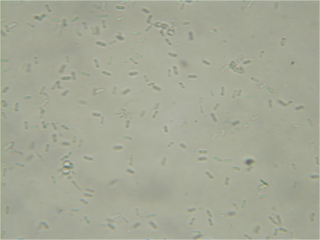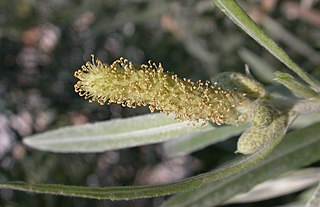
The beet armyworm or small mottled willow moth is one of the best-known agricultural pest insects. It is also known as the asparagus fern caterpillar. It is native to Asia, but has been introduced worldwide and is now found almost anywhere its many host crops are grown. The voracious larvae are the main culprits. In the British Isles, where it is an introduced species and not known to breed, the adult moth is known as the small mottled willow moth.

Cymothoa exigua, or the tongue-eating louse, is a parasitic isopod of the family Cymothoidae. It enters fish through the gills and the female attaches to the tongue, with the male attaching on the gill arches beneath and behind the female. Females are 8–29 millimetres (0.3–1.1 in) long and 4–14 mm (0.16–0.55 in) wide. Males are approximately 7.5–15 mm (0.3–0.6 in) long and 3–7 mm (0.12–0.28 in) wide. The parasite severs the blood vessels in the fish's tongue, causing the tongue to fall off. It then attaches itself to the remaining stub of the tongue and becomes the fish's new tongue.

Phoma exigua is a fungal plant pathogen. It causes wet weather blight in cotton and it can be treated with systemic copper.

Salix exigua is a species of willow native to most of North America except for the southeast and far north, occurring from Alaska east to New Brunswick, and south to northern Mexico. It is considered a threatened species in Massachusetts while in Connecticut, Maryland, and New Hampshire it is considered endangered.

Iflaviridae is a family of positive sense RNA viruses insect-infecting viruses. Some of the insects commonly infected by iflaviruses include aphids, leafhoppers, flies, bees, ants, silkworms and wasps. The name "Ifla" is derived from the name "Infectious flacherie virus", for the type species. There is only one genus (Iflavirus) and 15 species in this family, including the type species Infectious flacherie virus.

Stephanomeria exigua, the small wirelettuce, is a perennial or biennial plant native to the western United States. It is thought to be the parent species of Stephanomeria malheurensis, an endangered plant species found only in southern Oregon. It generally blooms from mid-spring to late summer and produces small, light pink or light purple blooms.
Veigaia is a genus of mites in the family Veigaiidae.
Veigaia carpillaris is a species of mite in the family Veigaiidae.
Veigaia cerva is a species of mite in the family Veigaiidae. It is found in Europe.
Veigaia formosana is a species of mite in the family Veigaiidae.
Veigaia hohuanshanensis is a species of mite in the family Veigaiidae.
Veigaia kochi is a species of mite in the family Veigaiidae. It is found in Europe.
Veigaia limulus is a species of mite in the family Veigaiidae.
Veigaia nemorensis is a species of mite in the family Veigaiidae. It is found in Europe.
Veigaia paradoxa is a species of mite in the family Veigaiidae.
Veigaia planicola is a species of mite in the family Veigaiidae. It is found in Europe.
Veigaia pseudouncata is a species of mite in the family Veigaiidae.
Veigaia uncata is a species of mite in the family Veigaiidae.
Geodia exigua is a species of sponge that produces the sesquiterpene spiro compound exiguamide. The species was first described by Johannes Thiele in 1898. It is a marine organism known from Japan.





